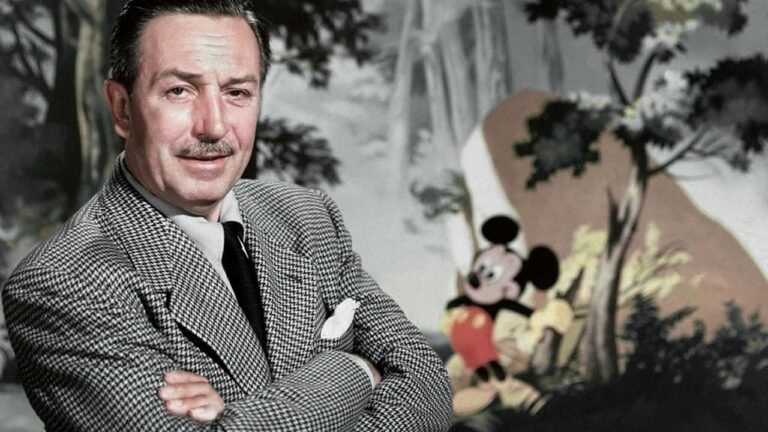Native American Trails: Ancient Pathways Explored
Peering into the past to uncover the historical significance of native American trails, one finds a rich tapestry of cultural exchange, migration, and organic city planning. Understanding these native American trails provides an in-depth perspective on the earliest inhabitants of North America.
Delve into the main aspects of these corridors of history with the following key points:
- Major Native American Trails: These ancient pathways charted the continent long before Europeans arrival.
- The Native American Travelers: The nomadic tribes were adept at navigating these routes.
- Puebloan Trade Centers and Trails: These paths also served as vital trade networks among tribes.
- The Legacy of Native Trails: Many of our modern highways mirror these original thoroughfares.
- Native Trails in Colonial Georgia: These trails played a significant role during colonial times, particularly in Georgia.
- American Indian Geography and Trails: Interpreting the geography connected to these trails can offer fascinating insights.
- Exploring Hikes on Indian Footpaths: Today, many enjoy hiking and exploring these historic paths.
Not only do these native American trails provide a glimpse into pre-colonial North America, but they also continue to influence contemporary society in surprising ways.
The Influence and Significance of Native American Trails
In today’s context, understanding this network of native American trails is vital for archaeologists and historians. It aids in the reconstruction of our past.
Many enthusiasts undertake hikes along these trails, experiencing interesting landscapes while connecting with history.
Apart from serving as important trade routes, these trails were also avenues for cultural exchange and information dissemination.
Overall, preserving and studying these native American trails is crucial as they are an integral part of the country’s heritage.
Contents
Major Native American Trails

You’d be surprised at the rich Native American history that lies beneath your feet as you hike America’s national parks.
As you journey, ponder upon the significant role of indigenous trails throughout history.
- The Iroquois Trail, a key corridor in the northeast.
- The Old Spanish Trail, connecting Santa Fe to California.
- The Mojave Road, vital for desert crossings.
- Nez Perce (Nee-Me-Poo) Trail, a historical retreat path.
These paths of yesteryears became foundational frameworks for today’s highways, railways and city structures.
Awareness and appreciation of the underlying routes is a tribute to these silent stories from the past.
Deepen your connection to these trails by learning about their histories. Borderlands historian Jaylyn Gough is an example of an individual dedicated to enlightening others on this topic. You can learn more about her story here.
Your explorations will never be the same once you perceive the overlays of times gone by.
The paths walked by Native Americans remain as reminders of their legacy, their struggles, and their triumphs.
Every step on these trials unravels unique narratives etched in every nook and corner of this vast country.
So, next time you lace up your hiking boots, take a moment to appreciate the ground beneath you – it’s much more than just dirt and gravel.
The Native American Travelers

Indigenous Americans like Weyonomon weren’t always on the receiving end of exploration.
Diverse tales challenge this traditional narrative.
For instance, we encounter Matoaka,
known to many as Pocahontas or Rebecca Rolfe.
Her journey to Europe is a renowned tale,
though often misinterpreted and highly fictionalized.
The Aztec-Mexica’s interactions with Cortés,
a Spanish explorer, evoke interest.
The Indigenous entertainers he took back to Spain in 1528,
serve as key examples of these interactions.
Their experience sheds light
on the tragic impacts of disease for Indigenous communities.
Heartbreaking accounts exist of Indigenous people enslaved in Europe,
either kidnapped or encountered during expeditions.
suggests that by 1542,
Spanish territories shouldn’t enslave Indigenous residents,
leading to investigations by the Spanish crown.
“On Savage Shores”, a book highlighting the overlooked stories of Indigenous people in Europe,
serves as an illuminating read on this subject.
| Name | Journey | Experience |
|---|---|---|
| Pocahontas (Matoaka) | Travelled to Europe | Misinterpreted and heavily fictionalized story |
| Weyonomon | Travelled to Europe | Seldom talked about story |
| Aztec-Mexica entertainers | Taken to Spain by Cortés in 1528 | Impacted by diseases |
| Enslaved Indigenous people | Travelled to Europe as captives | Fought for, and sometimes achieved, freedom |
| Table 1: Summary of some Indigenous American travels to Europe | ||
In essence, the Indigenous American travel stories are diverse and nuanced, illuminating parts of history often overlooked.
Following the Ancient Pathways

By exploring an archaeological discovery in northern England, you get to journey back to ancient times.
A pit with prehistoric tools, nestled on an old pathway, becomes your time machine.
These tools, hidden for thousands of years, bring you face-to-face with our Stone Age ancestors.
“Digging into history not just reveals secrets of the past but also creates a roadmap to understand our present.”
The flint tools reflect their knowhow of local geology and resource management skills.
The way the tools were placed might even hint at rituals or spiritual practices.
This discovery opens up new possibilities about how our ancestors moved and settled.
Being near an ancient pathway implies it might have been a major travel corridor connecting communities.
Each tool is a testament to their daily activities and adaptation techniques.
Their presence paints a vivid picture of human adaptation and cultural evolution over time.
Puebloan Trade Centers and Trails

The Pueblo Native Americans played integral roles in shaping America’s heritage and culture. Their historic trails and trade centers, like Nambé Pueblo, served as pivotal hubs.
Once a center of culture and religion during the 1300s, Nambé Pueblo’s rich history is felt up to the present day. Immerse yourself in a journey back in time at their Poeh Cultural Center and Museum.
- Nambé Pueblo: Known as “People of The Round Earth”, this pueblo offers a vivid glimpse into the past.
- Pojoaque Pueblo: Dubbed the “Water Gathering Place”, it was nearly destroyed by war and disease yet has flourished once again with its cultural center.
- San Ildefonso Pueblo: Known for its famous black-on-black pottery, it has become a major arts hub.
- Tesuque Pueblo: Described as the “Cottonwood Tree Place”, this vibrant community offers unique pottery and sculpture.
Each pueblo presents its culturally rich offerings. From traditional forms of art, ranging from pottery to sculptures, to breathtaking natural landscapes, the pueblo trails are sure to captivate visitors.
San Ildefonso Pueblo, for example, is renowned for its notable potters who continue the tradition of creating black-on-black pottery style. It’s a thriving arts community where you can directly purchase native artisan crafts.
Meanwhile, Tesuque Pueblo is a vibrant farming community that spans over 17,000 acres. Despite being one of New Mexico’s smallest pueblos, it is highly recognized for the pottery, painting, and sculpture from its local artisans.
So, embark on a journey through these historic trails and discover the rich heritage of the Puebloan people. Experience their thriving art scene, learn about their history, or simply appreciate their stunning natural beauty.
The Legacy of Native Trails

Imagine trudging through uncharted territories in the Southwest during the 17th century, paving paths as Spanish explorers. These paths later became known as the Royal Road of the Interior Lands.
Look into Alaska’s Stained Rivers, pristine waterways in the Brooks Mountain Range getting affected by an unforeseen phenomenon since 2017. The reason is still a mystery to many.
Aid your understanding with news and features from a nonprofit media organization, National Parks Traveler. Established in 2005, they provide informative articles about national parks and related concerns.
| Name | Description | Year of Establishment |
|---|---|---|
| Royal Road of the Interior Lands | Path established by Spanish explorers | 17th Century |
| Alaska’s Stained Rivers | Pristine waterways in Brooks Mountain Range | Affected since 2017 |
| National Parks Traveler | Nonprofit media organization about national parks issues | 2005 |
| Visitor data including browser activities, IP addresses, along with the time and pages visited are also collected. | ||
| Table 1: Summary of Native Trails history and recent phenomena. | ||
Your data is valuable. Knowledge of how National Parks Traveler collects visitor data can help you understand their privacy practices control your information.
Native Trails in Colonial Georgia

Embrace the rich history of Georgia’s Native American tribes. These tribes have left their mark throughout the state, their stories preserved in heritage sites
Honor the indigenous people by embarking on the 200-mile Chieftains Trail. Dubbed ‘the enchanted land’ by the Cherokee, northwest Georgia beckons you.
Discover the legacy of the Native American cultures that once thrived here. As you traverse this trail, you gain a gateway into understanding their lives.
The historical routes used by these tribes offer a unique perspective into Georgia’s past. Their stories are woven into every step, inviting introspection and respect.
The exploration isn’t purely geographical but also chronological; journey through time as you immerse yourself in tales from ancient civilizations.
Your path is not only enriched by the cultural enrichment these trails provide but also by the natural beauty of Georgia itself, adding to your adventure.
The art forms, structures, and artifacts found here serve as tangible connections to a past that informs our present and guides our future.
From educational resources to tailored solutions, following this trail provides an experience filled with depth and significance. Venture forth for new insights – it awaits you!
American Indian Geography and Trails

Wyoming’s highways and roads echo the Native American trails of old. These paths, carved by hunter-gatherer tribes like the Shoshone, Arapaho, and more, are filled with history.
These extensive routes reflect a complex network established across generations. They connected hunting grounds, sacred sites, and tribal lands seamlessly.
The Significance of the Trails
Before European arrival, these trails were vital survival tools. They formed links from the Great Plains to the Rocky Mountains.
The tribes relied on these routes for various activities. From hunting expeditions to diplomatic missions, they served versatile purposes.
Trail Examples and Events
The Bozeman Trail is one example. Starting from the Oregon Trail, it led prospectors to Montana Territory’s gold fields in the 19th century.
The Bridger Trail was another established pathway. Founded as an alternative to the Bozeman Trail in 1864, it promised a direct route to gold fields without clashing with Native Americans.
Notable Historical Instances
These trails have witnessed significant events like the Sun Dance. In 1812, Adrian Heidenreich documented a notable instance held by the Crow Nation.
Tensions between settlers and Native Americans flared up on these trails at times too. One such incident occurred in 1906 when hungry Utes confronted settlers.
Reflections on American Indian Geography
The narrative of these trails showcases the rich history of American Indian geography in Wyoming. It reveals a tapestry woven with culture, trade, spirituality and conflict.
Regrettably though, this history also echoes stories of violence and displacement inflicted upon Native American communities from their ancestral lands.
Exploring Hikes on Indian Footpaths

Embrace the wonders of nature by exploring hikes on Indian footpaths. The richness in diversity of these trails provides an enriching experience.
Join the community of passionate trail professionals who treasure the beauty of these paths. With high-quality trails, your adventuring spirit will be fulfilled.
- Nature’s bounty: These trails offer a glimpse into Nature’s magnificence.
- Historic significance: Every path has a tale to recount from Native American history.
- Collaborative efforts: These trails are maintained through partnerships between various stakeholders.
- Educational element: Each hike is an opportunity to learn something new about the environment and indigenous cultures.
Trek along these greenways and immerse yourself in the peace they offer. Their beauty enhances the value of outdoor experiences, making them a perfect getaway.
Subscribe to our resources for latest trail news. Be part of this rapidly growing community that promotes trail preservation and diversity.
Bask in the pleasure of walking along these trails. They promise an intriguing journey into past, present, and future of Native American heritage.
Unearthing Ancestral Routes
Dig deep into the fascinating exploration of Native American Trails: Ancient Pathways. This work unveils the rich history, culture, and survival techniques of indigenous tribes through intricate pathways. It’s a captivating journey into a past world that weaves natural landscapes with human ingenuity and resilience. A must-read for those interested in understanding our roots and preserving ancient heritage.










